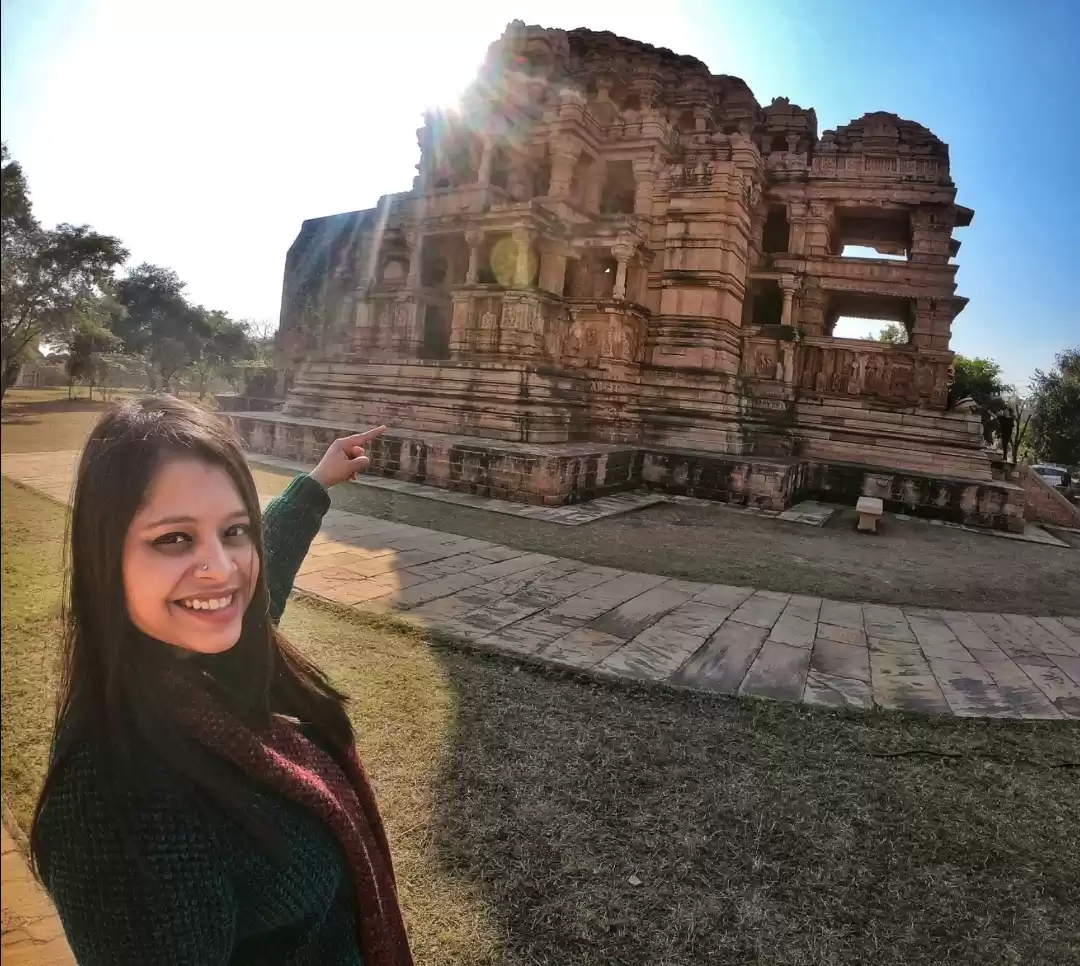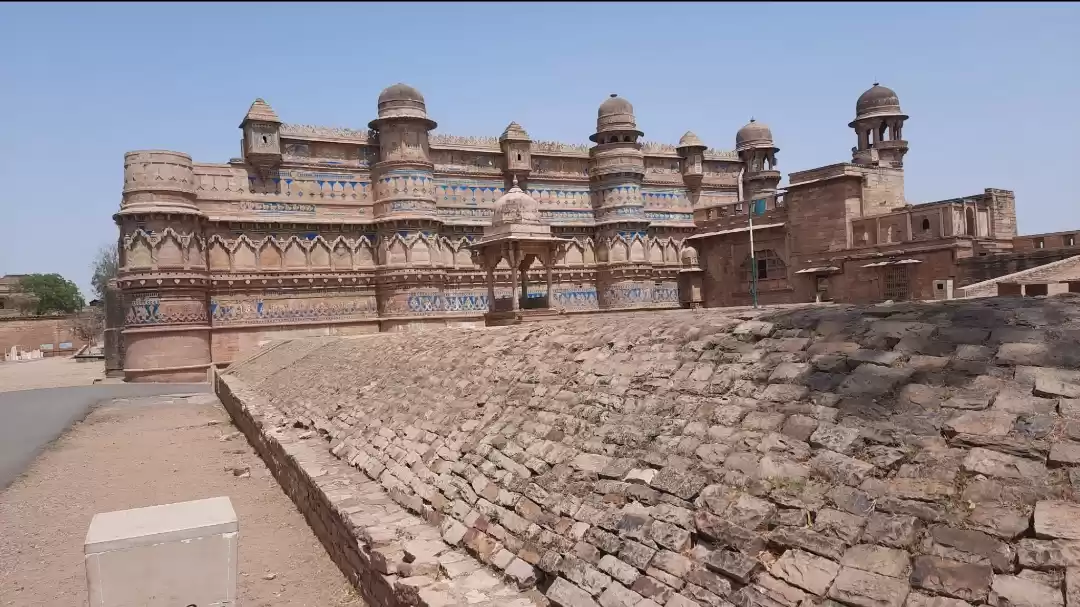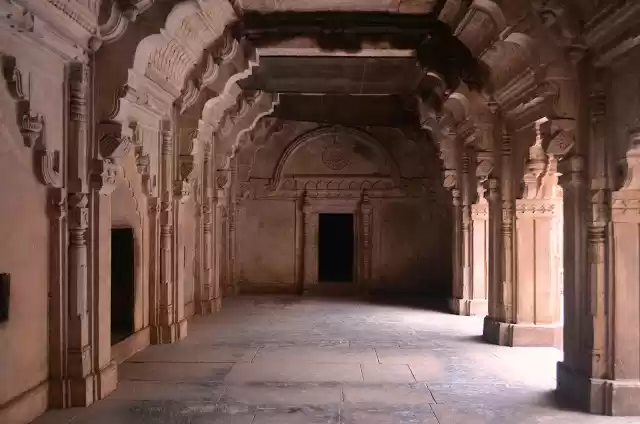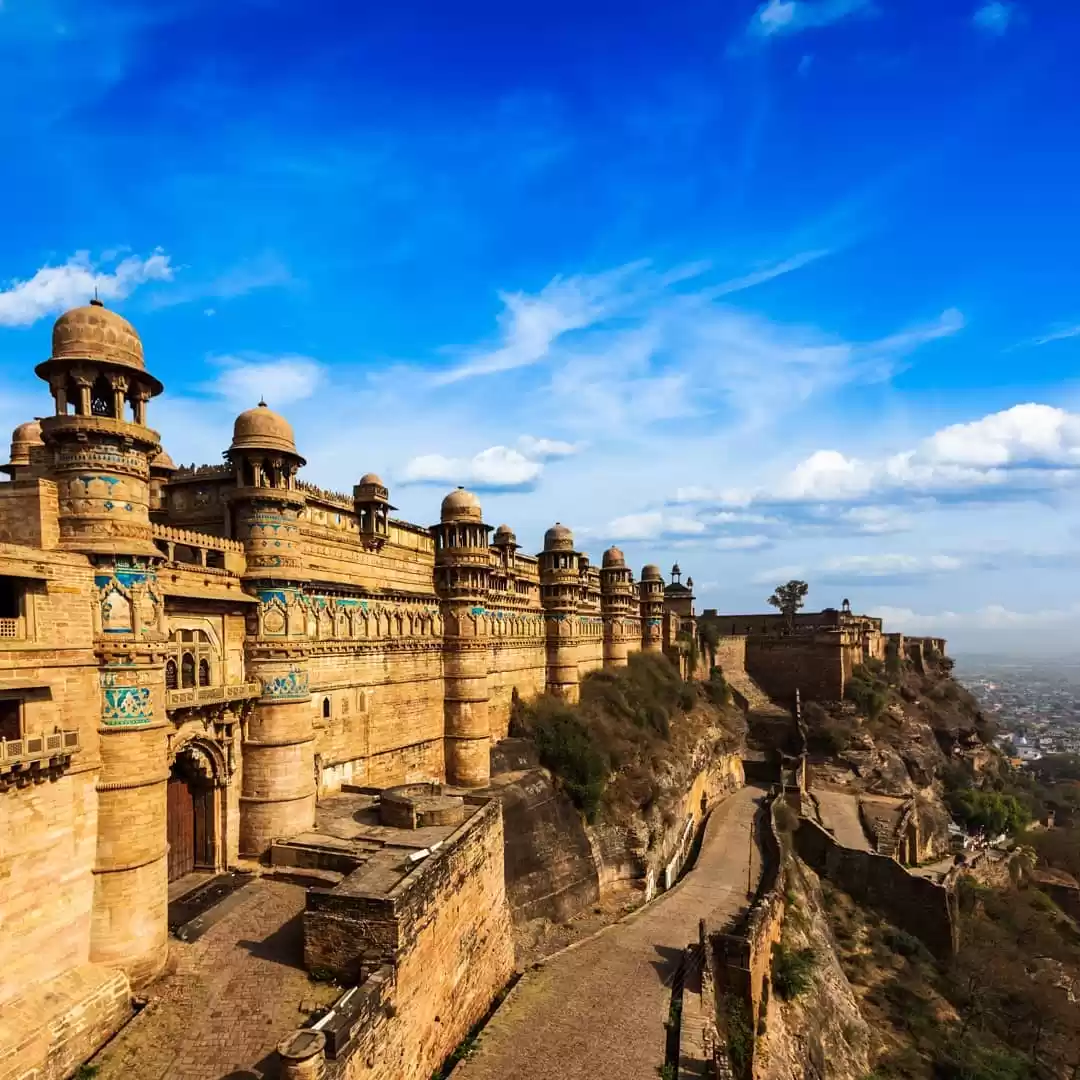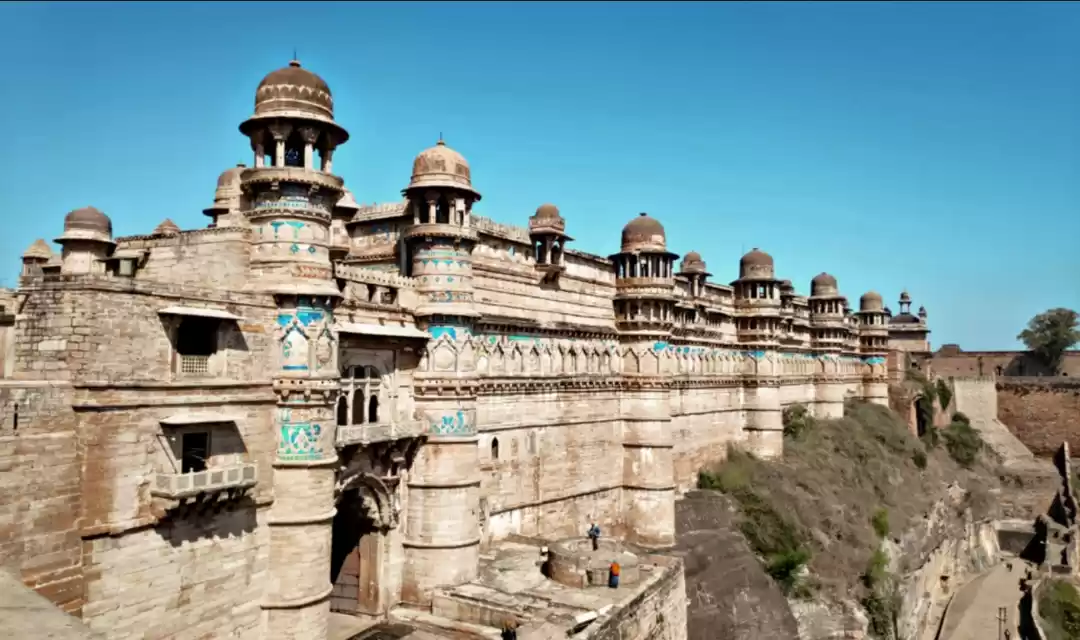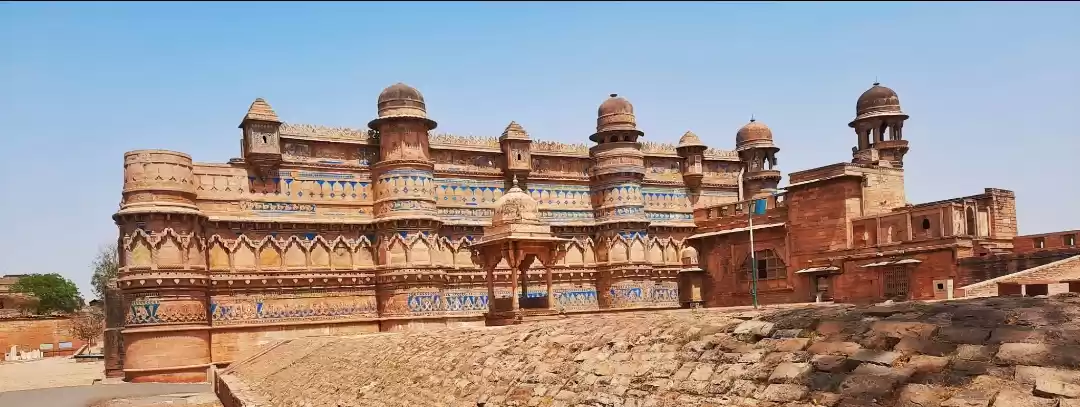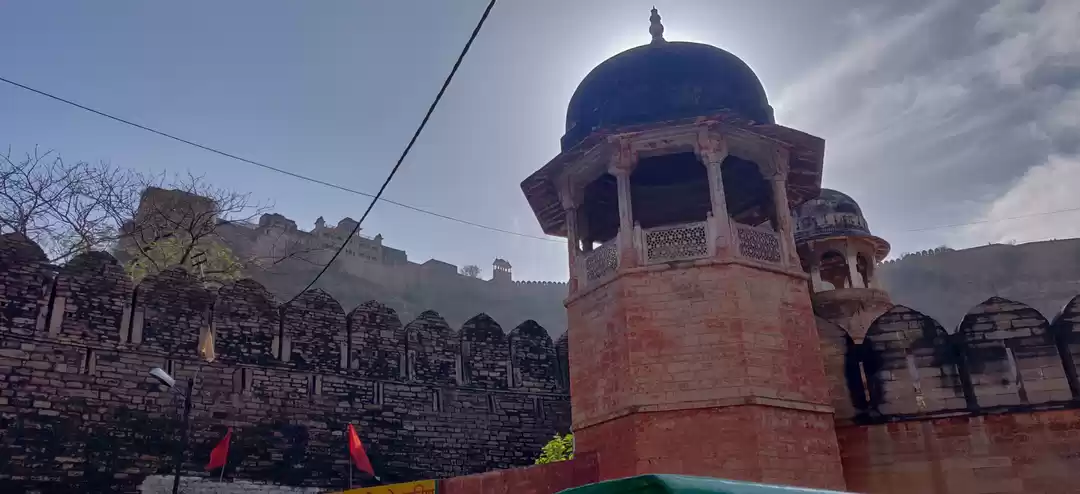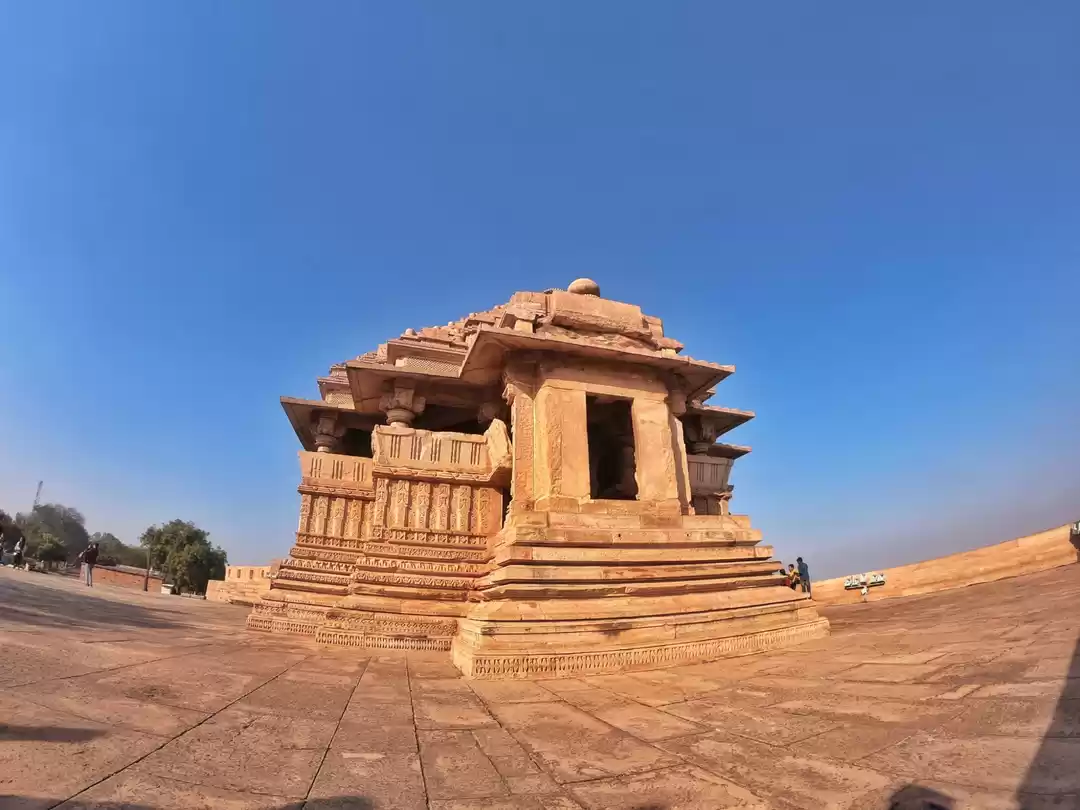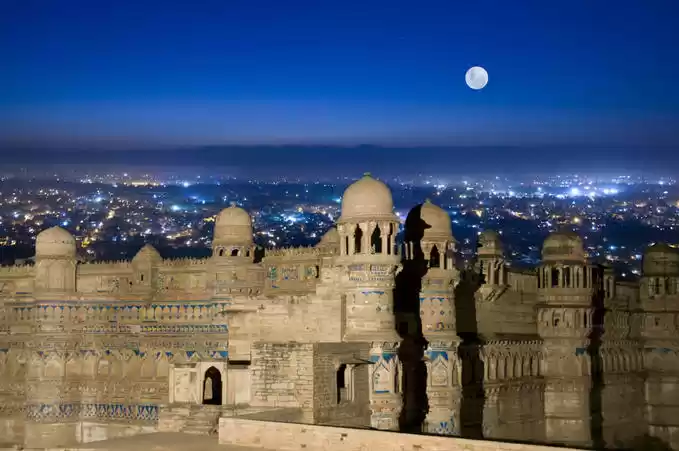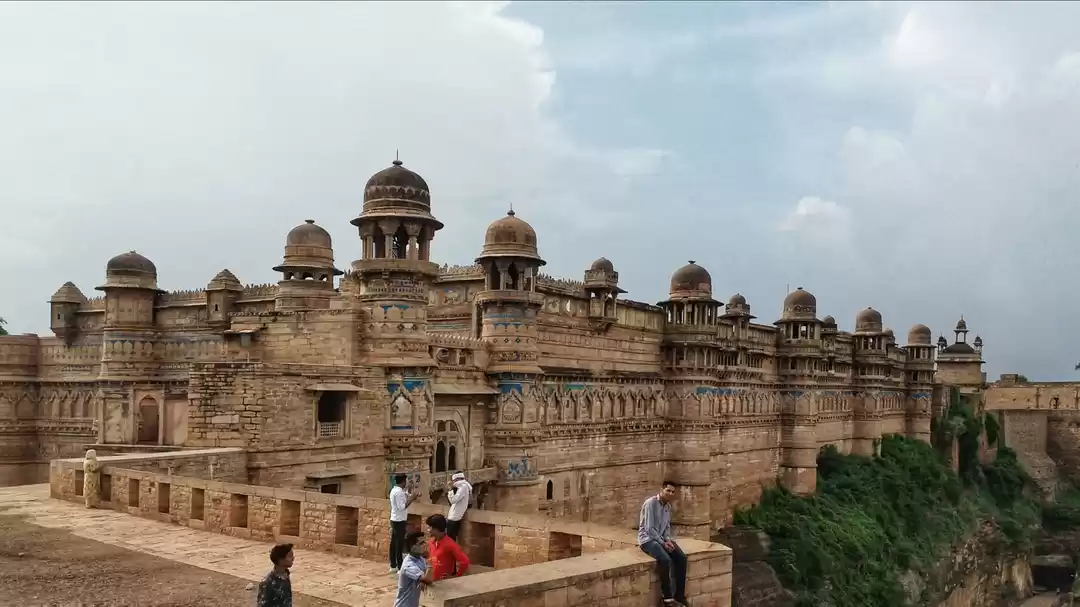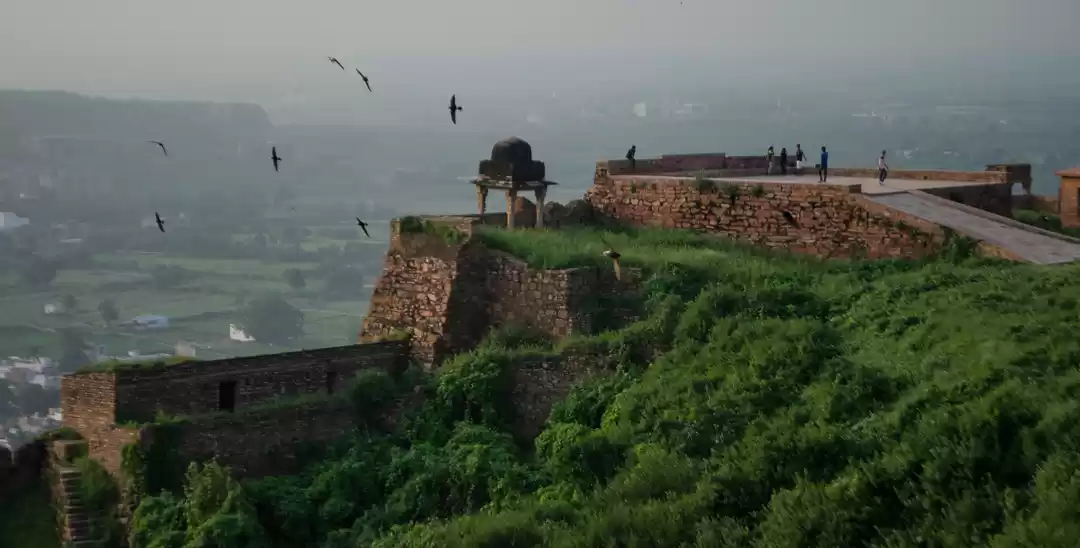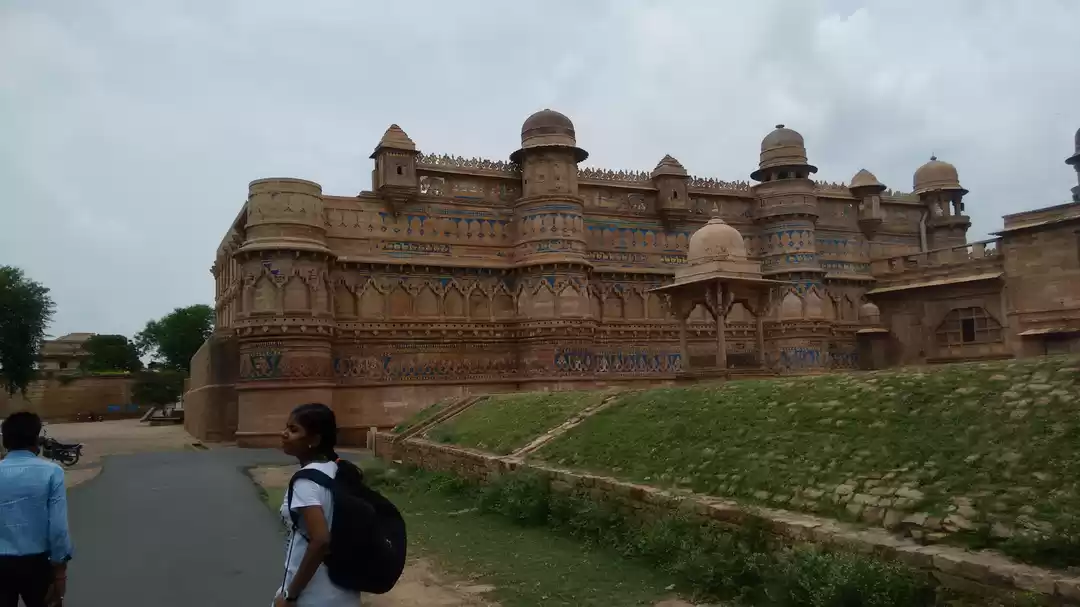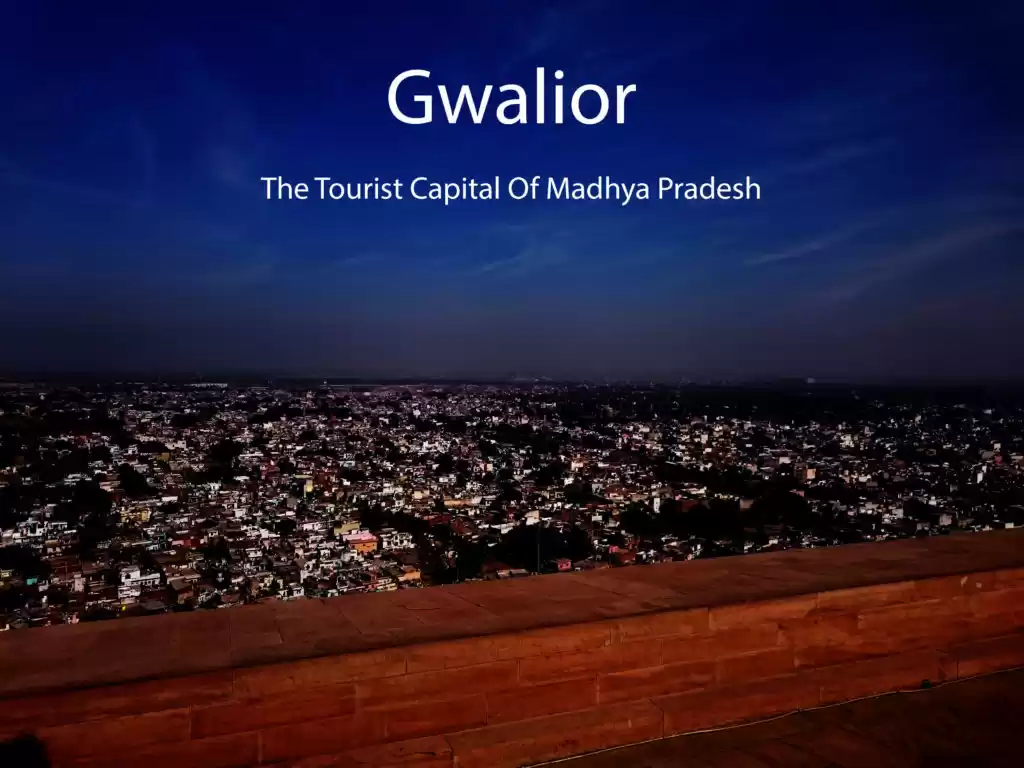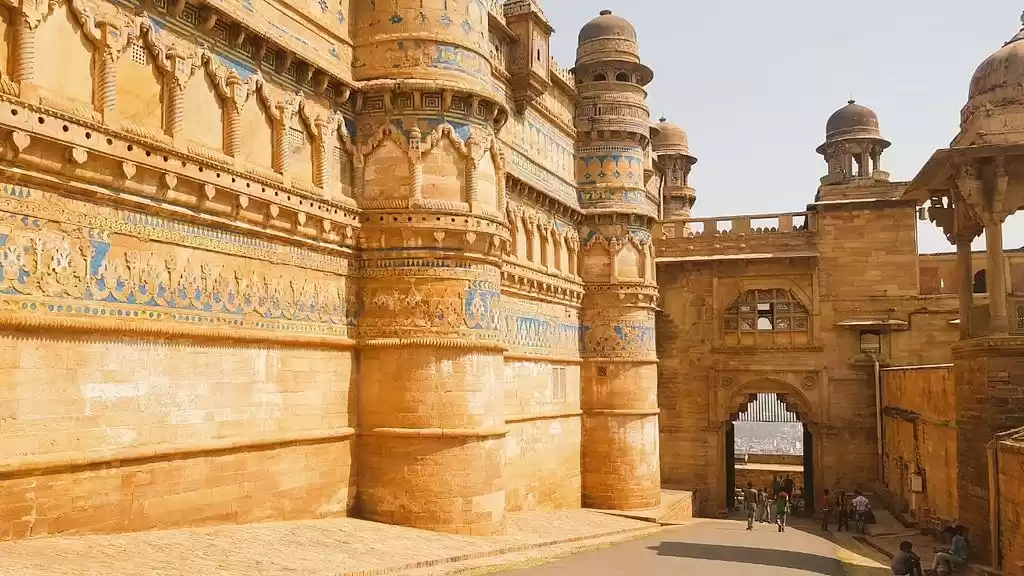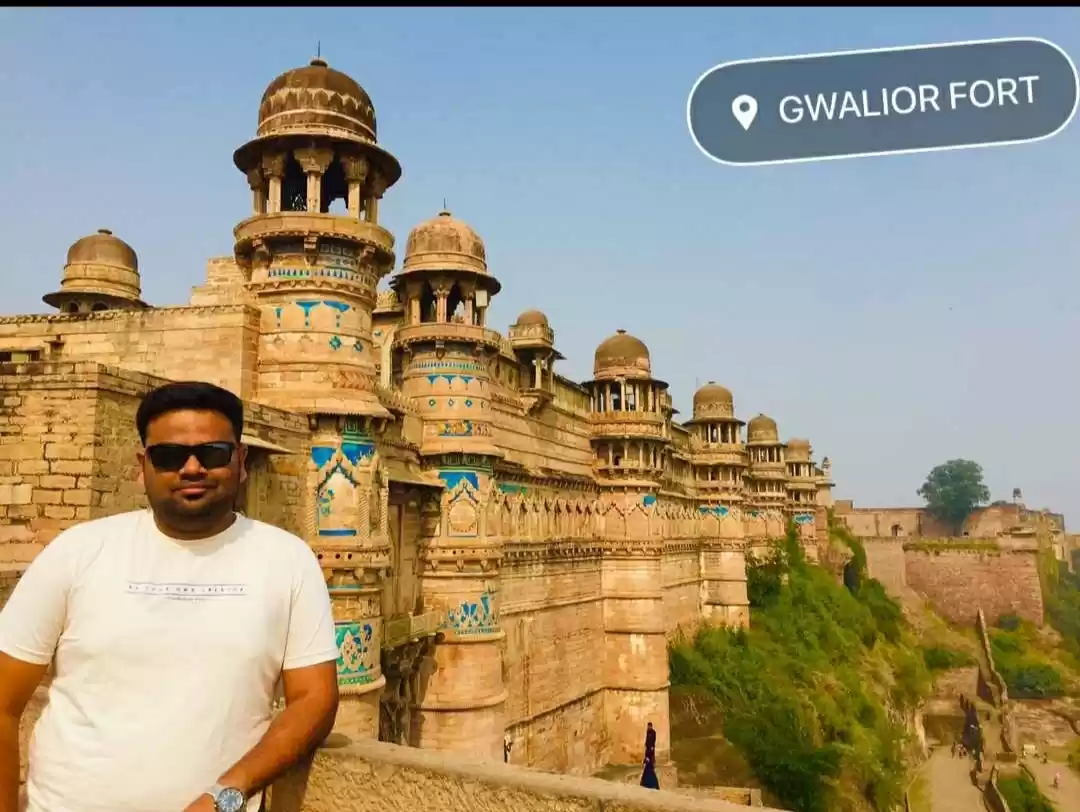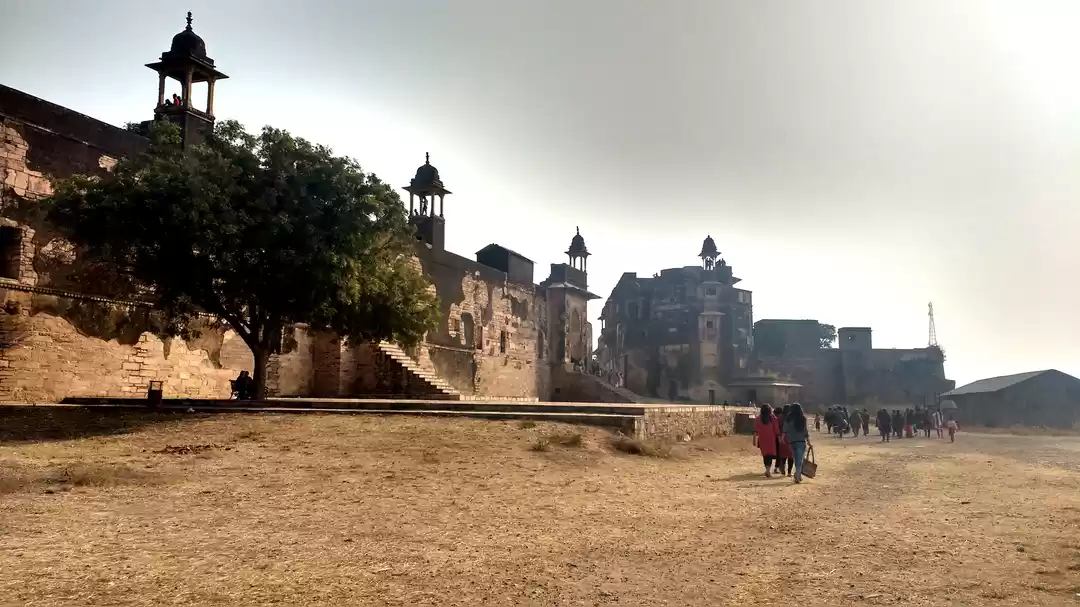


I was visiting Gwalior for the second time - the first visit was actually hilarious. This was about 2 years back when my parents were excited to get me married. I met my first alliance then. Well, this time the visit was planned as my parents had shifted to this city. One day before the trip, i started preparing my itinerary, Gwalior fort and Saas-bahu temple being my top priority. My first halt was Delhi - which was chilling on the New Year's Eve. From the nation's capital I boarded a train to Gwalior. It was night by the time I reached my destination. My second day started with a layer of deep fog all over - we were struggling to even get out of the blankets. We somehow managed to get of our place by 12 noon. Our first stop was at the Gwalior fort. I wish I could explain my joy in words when I reached the entrance. Looking at it, I could actually picture a royal caravan entering the huge gate. The fort is spread across 3 square kilometers - there are many palaces within the fort boundary including Manmandir palace, Jahangir palace, Shahjahan palace, Karn mandir,
Vikram mandir, Jauhar kund and Chhatri of Bhimsingh Rana. 1. Manmandir palace - This structure was built by Maharaja Man singh Tomar in the 15th century. This palace has a beautiful blue paint on the outside sandstone walls. This is the biggest of all the buildings inside the fort. It has many courtyards, large verandas and brilliant art work on the walls. The most attractive part of this structure are the underground water tanks referred to as swimming pools. Most of the interior parts of the building are dark and ceilings are populated by many bats - these areas stink a lot. As per the history, when Mughals captured the fort they converted the Manmandir Palace into a prison. You can actually see a lot of iron rings that were used to chain the prisoners. 2. Karn Mahal and Vikram Mahal - These structures were built by Tomar kings, Karan Singh and Vikram Singh. These are standalone buildings in a huge courtyard; two storied buildings each having long verandas, terraces, bathroom and bedrooms. Though Vikram Singh, the elder son of Maharaja Man Singh was considered to be one of the weakest in the blood line, he was huge devotee of Lord Shiva. His palace still has a Shiva Temple in the courtyard.
From the terrace of the Karan Mahal, you can see one of the entrance gates which is historically famous as the gate where Rani of Jhansi Lakshmi Bai waited for 2 days for Scindias to let her army in and provide a cover so that they could prepare for a fight against the British Army. After no response from the Scindias and seeing the british army at a very short distance, she instructed the platoon to attack. The Jhansi Army was defeated by the British and Rani Lakshmi bai chose to stab herself rather than getting captured by the British. 3. Jahangir Palace and Shahjahan palace - After Mughals captured the Gwalior fort, these buildings were built for the respective kings. 4. Jauhar Kund - After the defeat followed by the death of Maharaja Bhim singh, all his queens jumped and burnt themselves to ashes in this kund. 5. Gujjari Mahal - IT was built for Queen Mriganani of Maharaja Man Singh. This building is now an archaeological museum. A british gunpowder factory is also located inside the gwalior fort premises. This factory is no more operational. Also the machinery is shifted to the museum. A bit ahead of the gwalior fort on the same hill, there are the duo Saas-Bahu temples. These temples are huge with very attractive architecture consisting of beams and pillars without any arches. These are Vishnu temples constructed for a mother-in-law and daughter-in-law duo.
One more attraction at the Gwalior fort is the light and sound program which is conducted in both English and Hindi at 6:30 PM and 7:30 PM, respectively. This program captures the entire history of the fort. When lights of various colors fall on the entrance wall of the fort, the sight is very soothing. Do not miss this... I suggest that one should spend a full day at the fort to closely observe the architecture from various dynasties. There are guides available at the fort who will take you on a trip to the Gwalior fort's history.
Frequent Searches Leading To This Page:-
gwalior city attractions, gwalior city of madhya pradesh, gwalior madhya pradesh tourist places, gwalior visiting places, gwalior madhya pradesh india


